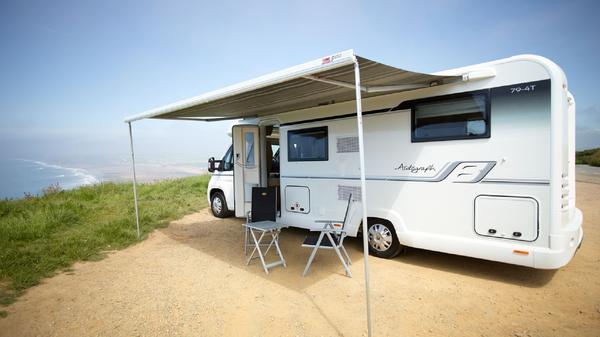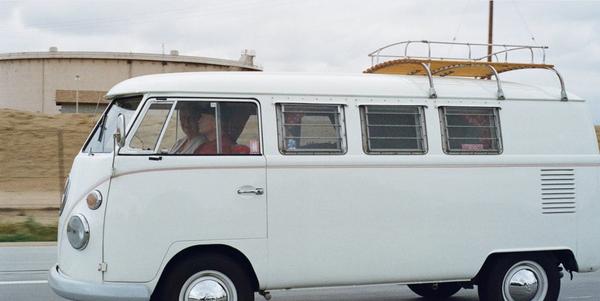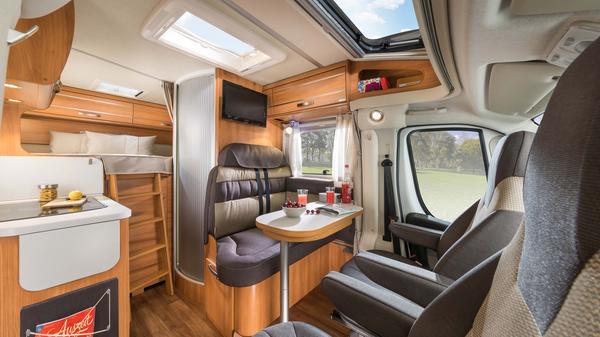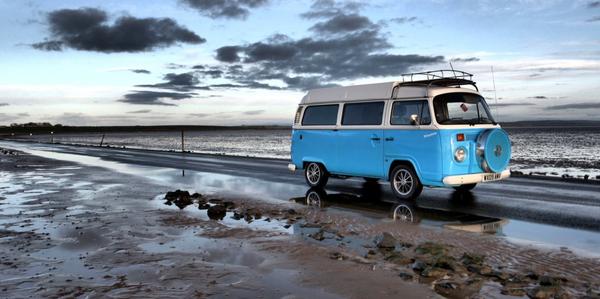Advice
Motorhome and campervan buyers' guide
Complete & comprehensive motorhome buying guide. Know what to look for, and where, when buying a motorhome and see the best UK motorhome deals on Auto Trader


Words by: Andrew Woodhouse

Additional words by: John Rawlings
Last updated on 1 July 2019 | 0 min read
Motorhomes, campervans, RVs, call them whatever you want as they all conjure up instant images or fun road-trips or cool surfing days at the beach, but whatever type of ‘van you are looking to buy, it is important to consider a few hints and tips to help you make the best choice, avoid any classic mistakes, and be stress-free, legal and safe.
Also, have you asked yourself whether you want a motorhome or a caravan? There are advantages and disadvantages of both depending on how you travel, where you want to go and what you want to do when you get there. It’s much easier to hire a motorhome than a caravan, which is a great way to try before you buy one. We’ll assume you have decided that towing isn’t for you and you want four wheels under your mobile accommodation, and if it’s OK with you, we’ll stick to the generic term of motorhome to cover the plethora of sizes and types throughout these hints and tips.
Also, have you asked yourself whether you want a motorhome or a caravan? There are advantages and disadvantages of both depending on how you travel, where you want to go and what you want to do when you get there. It’s much easier to hire a motorhome than a caravan, which is a great way to try before you buy one. We’ll assume you have decided that towing isn’t for you and you want four wheels under your mobile accommodation, and if it’s OK with you, we’ll stick to the generic term of motorhome to cover the plethora of sizes and types throughout these hints and tips.
Motorhome and campervan weights
- You may need a specific driving licence for certain weights
- Take the ‘payload’ (how much stuff you’re taking) into consideration of the overall weight

Motorhome and campervan sizes
- Compact campervans are popular, though coachbuilt motorhomes offer more space
- If travelling abroad, remember ferry companies can charge by vehicle length
- The trend for down-sizing means there are more motorhomes under 6m in length on the market

Motorhome and campervan layouts
- Consider the importance of kitchen, storage and sleeping facilities when shopping
- Decide whether you want to pay more for an on-board washroom
- Don’t be afraid to try before you buy

Essential checks when viewing a motorhome or campervan
In addition to checking for any obvious signs of wear and tear or any damage on the exterior of the motorhome, we’d recommend four essential things to check before buying it:
- Is it stolen? Check the seller has any receipts from buying it and servicing it. Are there any obvious signs of damage from tampering with the hitch, door locks, windows, VIN (Vehicle Identification Number) or weight plate? Check its registration details and history (or outstanding finance) before paying any money.
- Is it damp? Water ingress is the curse of any coachbuilt motorhome – and can be expensive to repair. Motorhomes are exposed to hot sunshine and cold frosts, then flex a bit as they travel, so it’s a challenge for their bodyshells to stay watertight over time. Take a damp meter or get it checked/serviced professionally or you could lose out. The most likely places to find water ingress is around the front windows, rooflights, TV aerials, and the front and rear corners. Don’t rely on thinking you’
- Tyres: Many motorhomes do below average annual mileages, so although the tyre treads may look OK, always check how old they are as after a few years of being in the sun and having the load of the motorhome on them, the side walls can crack which could lead to a dangerous blowout while travelling. The tyres probably need changing every 4-5 years even if they’ve got plenty of tread left.
- When was it serviced? An annual service is recommended for any vehicle, but this includes the habitation part of the motorhome as well, and will be an essential requirement for any warranty to remain valid. Things like gas pipes, electrics, and heating all need servicing, and a service should usually check for any signs of damp as well. There’s a lot of equipment in a motorhome, so for your own safety, an annual service is extremely important.

Motorhome and campervan jargon explained
- MTPLM – Maximum Technically Permissible Laden Mass – the maximum weight that the motorhome must not exceed.
- MRO – Mass in Running Order – the weight of the motorhome in standard specification and without any personal items loaded (formerly known as the ‘ex-works weight’)
- Payload – the difference between the MRO and the MTPLM. This is the maximum weight of items you can load in to the motorhome.
- Campervan – there’s varying definitions of a campervan (or camper van), but traditionally, most probably think of them as having an elevating roof, or maybe a high-top roof. Some define it as whether it has a washroom, or not. These days, conversions of larger panel vans are also often called campervans as well.
- Rock-and-roll bed – Don’t get the wrong impression. This isn’t a bed with any connection to music. It’s simply the popular style of rear seat found in campervans that converts in to a double bed. Hopefully, the manufacturer will have properly crash-tested it.
- Coachbuilt – This must be the most popular type of motorhome construction. As its name implies, it is built on a chassis cab, so retains the front cab (usually a Fiat Ducato, or maybe a Peugeot Boxer, Mercedes Sprinter, Ford Transit or a Renault Master). They are usually wider and better insulated than a panel van conversion.
- Overcab – This term is easier to guess as its name gives away that the motorhome’s coachbuilt body continues over the vehicle’s cab, usually with a bed or storage space. This was a very popular body style of coachbuilt motorhome, but its obvious negative effect on aerodynamics and fuel consumption, plus the advent of drop-down beds, has led to the ‘low profile’ style becoming more popular.
- Low-profile – Basically, it is a coachbuilt motorhome without the overcab area/bed. This gives is a more efficient and aerodynamic styling.
- A-Class – Considered the most prestigious style of motorhome, the A-Class has a complete body built over the chassis and mechanics. Most are based on the same Fiat or Mercedes engines as coachbuilts, but without the cab or dashboard.

Motorhome and campervan storage and security
- Insurance is a must – consider contents insurance too
- Additional door locks and security features can improve your premium
- If possible, make sure your storage site is CaSSOA-registered

Motorhome and campervan equipment
- Basic motorhomes include mains power hook-up, heating and food facilities
- Van conversions, coachbuilt or A-class can offer hot water, showers and toilets
- Different trim levels offer different levels of luxury

Find your perfect motorhome or campervan
Further hints and tips
Related: Mastering a motorhome
Lots of people turn to social media to find answers to their motorhoming questions, which can be really useful, but sometimes this information is wrong or misleading, so be careful. For professional advice, you can join the Caravan and Motorhome Club, or the Camping and Caravanning Club; both have huge resources of information available. Both organisations and lots of owners clubs organise weekend events, where you’ll find lots of supportive and helpful people. For (hopefully) obvious safety reasons, you can’t sleep in the back of a motorhome while you’re travelling. Dogs need to be secure for travelling as well. If you haven’t driven a motorhome before, consider taking a motorhome manoeuvring course, or at least go to a large, empty supermarket car park for some practise before hitting the road. Wild camping is popular and simpler with a motorhome (than a caravan), but forbidden in many areas of the UK, so check first. The golden rule is to leave no trace of your visit. There is a whole network of places, such as pubs, that will let you stay overnight for free or a nominal fee, and Aires, mostly found on the continent, only allow motorhomes but usually provide the minimum of facilities for just a few Euros. It’s always a good idea to take a motorhome for a test drive to see how it feels and assess the amount of noise from rattles and squeaks from the interior. If you’re planning to park your motorhome at home, make sure there are no restrictions covering this on the deeds for the property. It should be less of an issue for motorhomes than caravans, but can still happen.
Lots of people turn to social media to find answers to their motorhoming questions, which can be really useful, but sometimes this information is wrong or misleading, so be careful. For professional advice, you can join the Caravan and Motorhome Club, or the Camping and Caravanning Club; both have huge resources of information available. Both organisations and lots of owners clubs organise weekend events, where you’ll find lots of supportive and helpful people. For (hopefully) obvious safety reasons, you can’t sleep in the back of a motorhome while you’re travelling. Dogs need to be secure for travelling as well. If you haven’t driven a motorhome before, consider taking a motorhome manoeuvring course, or at least go to a large, empty supermarket car park for some practise before hitting the road. Wild camping is popular and simpler with a motorhome (than a caravan), but forbidden in many areas of the UK, so check first. The golden rule is to leave no trace of your visit. There is a whole network of places, such as pubs, that will let you stay overnight for free or a nominal fee, and Aires, mostly found on the continent, only allow motorhomes but usually provide the minimum of facilities for just a few Euros. It’s always a good idea to take a motorhome for a test drive to see how it feels and assess the amount of noise from rattles and squeaks from the interior. If you’re planning to park your motorhome at home, make sure there are no restrictions covering this on the deeds for the property. It should be less of an issue for motorhomes than caravans, but can still happen.